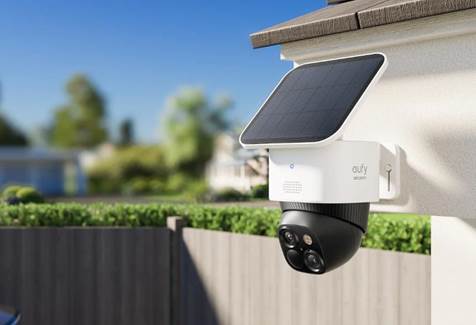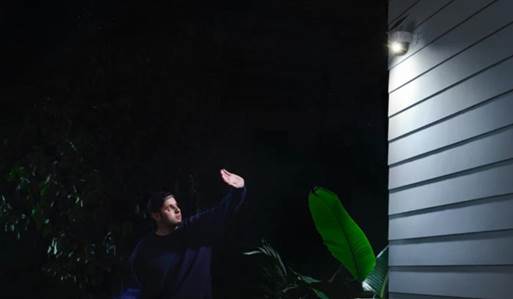Resolution
defines how much detail a security camera can capture. It affects whether you
recognize a face at your front door, identify a license plate on the street, or
simply review footage without guesswork. While 1080p once seemed enough,
today’s homes demand more. Higher resolution doesn’t just mean sharper
images—it means more reliable protection. But how high should you go? The best
resolution depends on where you place the camera, what you expect it to
capture, and how you use the footage afterward. Choosing wisely balances
clarity, storage, and usability, ensuring your system feels like a guardian
rather than a gadget.

Why Resolution
Matters in Real Life?
Resolution
shapes what you actually see when it matters most.
Clarity for
Faces and Details
The
most direct benefit of higher resolution is facial recognition. A 1080p camera
can show a person at your door, but a 2K or 3K camera reveals the finer
details—the shape of eyes, clothing textures, or even small objects in their
hands. This clarity matters not only for live monitoring but also for recorded
evidence. In practice, clear details mean you can confirm whether a delivery
was dropped off safely or identify a stranger who lingers near your property.
The difference between “a person” and “this person” often comes down to
resolution.
Wider Coverage
without Losing Sharpness
Homes
rarely need just a close-up—they need context. A driveway camera might need to
see cars pulling in, while a backyard camera must cover wide lawns or patios.
Lower resolutions blur as the field of view widens, leaving distant objects
unclear. Higher resolution solves this by keeping the whole frame sharp, even
when zooming in later. With dual-lens designs, like those found in advanced
cameras, you can view the big picture and zoom simultaneously without losing
clarity. This approach turns wide areas from vague outlines into detailed,
usable footage.
Nighttime and
Low-Light Performance
Resolution
also impacts how clearly cameras perform in low light. While sensors and
lighting technology matter, a higher pixel count provides better definition
when paired with night vision. Imagine checking footage after sunset—you don’t
just want to see a shadow near your garage, you want to confirm if it’s your
pet, a neighbor, or someone unfamiliar. Cameras with enhanced resolution paired
with strong low-light algorithms reduce blur and reveal sharper contrasts,
ensuring that the night doesn’t mask important details.

Matching
Resolution to Your Needs
Not
every location requires the same level of detail.
Doorstep and
Entryways
For
front doors, you need both clarity and context. Entryway cameras must capture
faces, packages, and sometimes vehicles parked nearby. This is where 2K to 3K
resolution offers the sweet spot—sharp enough for detail but not so heavy on
storage that it becomes impractical. A model like the SoloCam S340 Wireless
Outdoor Security Camera, with ultra-clear 3K resolution and 8× zoom, ensures
you don’t just see a visitor but recognize them instantly. For everyday use,
this makes the difference between peace of mind and uncertainty.
Driveways and
Larger Spaces
Driveways
and streets introduce longer distances. Here, higher resolution really pays
off. A 3K or 4K camera allows you to zoom into license plates or check
unfamiliar vehicles without distortion. At the same time, the wide field of
view keeps the rest of the area covered. A dual-camera design, where one lens
captures the big picture while another focuses on details, ensures you don’t
miss movement at the edge of the property. It’s about covering both close and
far with equal precision.
Backyards and
Side Areas
For
open spaces, clarity combines with coverage. Backyards often need full
scans—pets playing, children outdoors, or motion near fences. A high-resolution
camera with 360° coverage ensures there are no blind spots. Features like
solar-powered operation make it easy to install in corners where wiring isn’t
convenient. With sharp resolution, you can zoom into any section of the footage
and still recognize what’s happening, giving you reliable awareness even in
areas you check less often.
Resolution As
Part of the Bigger Picture
Choosing
resolution is about more than pixels—it’s about how the camera fits your
lifestyle.
Balancing
Clarity and Storage
Higher
resolution means larger files. That’s why balancing clarity with storage
options is essential. Some systems push cloud subscriptions, while others allow
local storage. A camera that records in 3K but saves directly to local memory
without monthly fees, like the SoloCam S340, keeps things simple. You get the
detail you need without the ongoing costs or the worry of running out of space.
Energy and
Convenience Factors
Resolution
doesn’t exist in isolation—your camera must run consistently to deliver it. A
solar-powered design ensures high-resolution footage continues without
interruption. This matters because a camera is only useful if it’s recording
when something happens. Reliable energy paired with sharp resolution provides
continuous protection you don’t need to monitor constantly. It turns security cameras
into a background comfort, always present, never demanding.
Future-Proofing
Your Home Security
Resolution
is also about tomorrow. As expectations rise, what feels sharp today may feel
outdated soon. Choosing a system with 2K or 3K resolution means you’re ahead of
the curve. With technologies like dual-lens designs, zoom capabilities, and
360° coverage, you’re not just buying resolution—you’re choosing adaptability.
This makes your investment more durable, ensuring your security cameras
continue to serve your needs for years without quick replacement.
Conclusion
The
best resolution for security camera use depends on what you want to see and
where you place the device. Entryways benefit from 2K to 3K clarity for facial
recognition, driveways demand higher detail for vehicles, and backyards need
wide coverage paired with zoom. The SoloCam S340 Wireless Outdoor Security
Camera demonstrates how ultra-clear 3K resolution, dual-lens design, and 360°
coverage create reliable protection without compromise. Paired with solar power
and local storage, it shows that resolution works best when combined with smart
features that fit daily life. With the right balance, resolution becomes less
about numbers and more about peace of mind.
